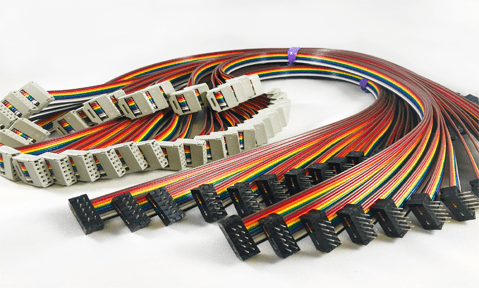Introduction
The HDMI (High-Definition Multimedia Interface) port has emerged as an essential element in contemporary electronic devices, facilitating the efficient transfer of high-quality audio and video across various platforms. Since its launch in 2002, HDMI has transformed the way we link devices such as televisions, monitors, gaming consoles, and computers, removing the necessity for numerous cables and connectors. This article explores the history, functionality, types, applications, and future prospects of HDMI technology, emphasizing its significance in the realm of multimedia and entertainment.
1. The Birth and Evolution of HDMI

1. Origins and Purpose
Prior to the introduction of HDMI, the connection of audiovisual devices necessitated the use of various cables and standards, such as VGA (Video Graphics Array) for video signals and RCA (Radio Corporation of America) cables for audio. These analog systems imposed limitations on transmission quality, particularly as high-definition content became more prevalent. In 2002, HDMI was created by a consortium of prominent electronics manufacturers, including Hitachi, Panasonic, Philips, Silicon Image, Sony, and Toshiba, with the aim of establishing a standardized interface capable of transmitting uncompressed video and audio data through a single cable.
2. Evolution of HDMI Standards
Since its inception, HDMI has undergone several iterations, each introducing improved features and capabilities to align with the progress in audiovisual technology. Below is a concise summary of the significant versions of HDMI:
HDMI 1.0 (2002): The initial version supported 1080p video and up to 8-channel audio, intended to replace older analog connections such as VGA and RCA cables.
HDMI 1.3 (2006): This version added support for Deep Color and xvYCC color spaces, enhancing color depth and range. It also raised the maximum bandwidth to 10.2 Gbps, facilitating the transmission of higher-resolution content and superior audio quality.
HDMI 1.4 (2009): HDMI 1.4 introduced support for 4K resolution (4096 x 2160 at 24Hz or 3840 x 2160 at 30Hz). Additionally, it incorporated Ethernet over HDMI, enabling data networking for connected devices, and the Audio Return Channel (ARC), which facilitated two-way audio communication between devices such as televisions and audio systems.
HDMI 2.0 (2013): This version represented a major enhancement, allowing for 4K resolution at 60Hz, 32-channel audio, and an increased bandwidth of 18 Gbps. It also introduced support for HDR (High Dynamic Range), which improved brightness, contrast, and color fidelity.
HDMI 2.1 (2017): HDMI 2.1 marked a significant advancement, providing support for 8K resolution at 60Hz and 4K at 120Hz, while also boosting the bandwidth to an impressive 48 Gbps.
2. Key Features and Capabilities of HDMI
1. High-Quality Video Transmission
A fundamental characteristic of HDMI is its capability to transmit uncompressed video, which guarantees that the image quality remains flawless from the source to the display. Supporting a range of resolutions from Standard Definition (SD) to Ultra High Definition (UHD), including 4K and 8K, HDMI has played a pivotal role in the advancement of high-definition and ultra-high-definition media.
2. Multi-Channel Audio Support
Beyond video capabilities, HDMI facilitates the transmission of multi-channel audio, allowing devices to provide surround sound experiences such as Dolby Atmos and DTS. It can handle up to 32 audio channels, making it ideal for home theater systems and professional audio environments where immersive sound quality is crucial.
3. Integrated Audio and Video Transmission
Before the advent of HDMI, the transmission of high-quality audio and video necessitated the use of separate cables, such as VGA for video and RCA for audio. HDMI streamlines this process by merging both audio and video into a single cable, thereby minimizing clutter and simplifying connections for users. This comprehensive solution has significantly contributed to the widespread use of HDMI in home entertainment systems and various multimedia applications.
4. HDMI-CEC (Consumer Electronics Control)
Another advantageous feature of HDMI is Consumer Electronics Control (CEC), which enables the management of multiple HDMI-connected devices with a single remote control. For instance, users can operate connected devices such as Blu-ray players, soundbars, or gaming consoles using the television remote, enhancing the user experience by reducing the necessity for multiple remotes.
5. Audio Return Channel (ARC) and Enhanced ARC (eARC)
HDMI also incorporates Audio Return Channel (ARC), which permits audio to flow both to and from the television through a single HDMI cable. This functionality eliminates the requirement for a separate audio cable when linking soundbars or home theater receivers to a television. With the introduction of Enhanced ARC (eARC) in HDMI 2.1, it is now possible to transmit higher-quality audio formats, including Dolby TrueHD and DTS-HD Master Audio, ensuring superior sound quality.
3. Types of HDMI Ports and Cables

1. Standard HDMI
The Standard HDMI (Type A) connector is the most prevalent type found in consumer electronics, including televisions, monitors, gaming consoles, Blu-ray players, and home theater systems. This connector features 19 pins and is compatible with all HDMI standards ranging from HDMI 1.0 to HDMI 2.1.
2. Mini HDMI (Type C)
The Mini HDMI (Type C) connector is a more compact version of the standard HDMI, frequently utilized in portable devices such as cameras, camcorders, and select tablets. Despite its reduced size, the Mini HDMI connector offers the same functionalities and performance as its standard counterpart.
3. Micro HDMI (Type D)
The Micro HDMI (Type D) connector is even smaller than the Mini HDMI and is typically found in ultra-compact devices like smartphones, action cameras, and small tablets. Similar to the Mini HDMI, it maintains the full capabilities of HDMI technology, enabling high-quality audio and video transmission from compact, portable devices.
4. HDMI Cables
Various types of HDMI cables are available to meet the diverse features and bandwidth requirements of different HDMI versions:
– Standard HDMI Cable: Capable of supporting resolutions up to 1080i/720p, suitable for older HDMI devices.
– High-Speed HDMI Cable: Supports 1080p, 4K (30Hz), 3D, and Deep Color, making it ideal for most contemporary devices.
– Premium High-Speed HDMI Cable: Designed for 4K (60Hz) with HDR, providing superior quality for 4K content along with enhanced color and brightness.
– Ultra High-Speed HDMI Cable: Necessary for HDMI 2.1 devices, supporting 4K (120Hz) and 8K (60Hz) resolutions, VRR, and Dynamic HDR. These cables offer a bandwidth of 48 Gbps and are crucial for the latest gaming consoles and high-end displays.
4. Applications of HDMI
1. Home Entertainment Systems
HDMI has established itself as the primary method for linking televisions, soundbars, gaming consoles, Blu-ray players, and streaming devices within home entertainment setups. The integration of high-definition audio and video through a single cable has streamlined installation processes and enhanced the overall experience of viewing and listening.
2. Gaming
For enthusiasts, HDMI serves as the favored connection method for linking gaming consoles such as PlayStation, Xbox, and Nintendo Switch to televisions and monitors. The features of HDMI 2.1 tailored for gaming, including Variable Refresh Rate (VRR), Auto Low Latency Mode (ALLM), and support for 4K at 120Hz, have positioned it as the preferred option for next-generation gaming experiences.
3. Professional Audio-Visual Systems
In professional environments, HDMI is extensively utilized in conference rooms, theaters, and media production facilities for connecting projectors, displays, and audio-visual receivers. Its capability to handle high-resolution video and rich multi-channel audio is crucial for delivering impactful presentations and high-quality multimedia content.
4. PCs and Laptops
HDMI ports are frequently integrated into laptops and desktop computers, enabling users to connect external monitors, projectors, or televisions for purposes such as presentations, gaming, or multimedia viewing. Additionally, many contemporary laptops, particularly those equipped with USB-C ports, also offer HDMI support.







